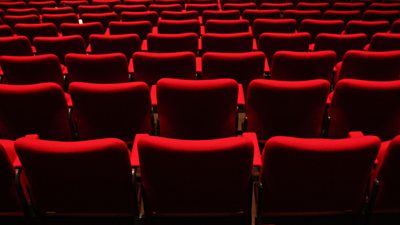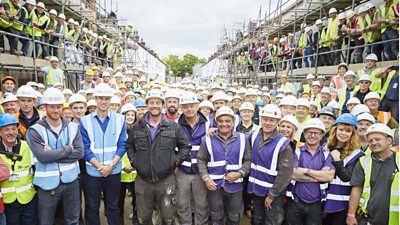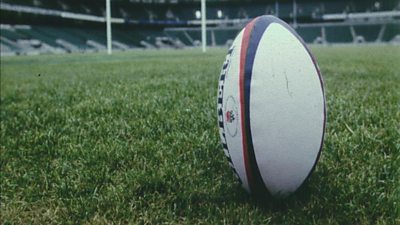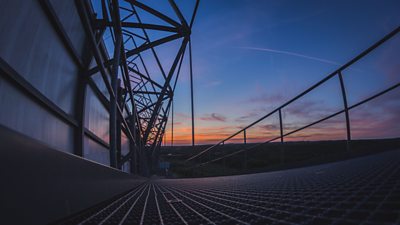This Guideline should be read in conjunction with our Guideline to Temporary Stages and Rostra (see Related Topics). The Guideline is not aimed at arenas, theatres and other similar venues which have fixed seating for their audiences, though some of the information provided here may be relevant to these also.
What Can Go Wrong?
- Collapse of structure / seating
- Blocked/restricted access / egress to exits and fire exits
- Slips, trips and falls
- Falls from height
- Restricted audience movement / difficult audience management.
Legal/91热爆 Requirements
- Productions are to engage a competent designer to design audience seating structures
- Designers often sub-contract this element of their design to a seating contractor/structural company who will build/assemble the structure on site. The design risk assessment should include this and provide details of the required control measures that are to be put in place
- Building Regulations, industry guidance and British Standards must be adhered to (such as BS EN 13200, BS 6399, BS 9999 and Approved Documents such as Part K) when designing audience seating
- Risk assessments should be obtained from the contractor erecting the seating.
Control Measures
- The maximum loading of seating structures/rostrums are to be calculated by a competent person (engagement of a Structural Engineer is recommended)
- The designer should factor in the intended use of the seating by audience (for example, whether the audience will remain seated, or whether they will jump up and down, stamp their feet, Mexican wave etc.) and any other dynamic movements or low frequency vibration
- The completed structure should be checked against the design by a competent person (designer and or structural engineer and or construction company representative) and handed over to the Production as fit for use
- Escape routes which factor in travel distance, number of people and the size/number of available exits are to be considered when designing audience seating
- The maximum loading and capacity is to be communicated to Production who is responsible for managing the access and use of the completed seating structure
- Seats should be arranged to allow ease of access/egress for audience
- Seats should be constructed / dressed in flame proof/retardant materials
- The method of constructing / assembling, fixing and securing seating structures should be appropriate to the size, height and use of the structure
- Seats should be adequately secured to prevent overturning or moving which may lead to audience members becoming trapped or falling over the dislodged seats
- The design should bear in mind the comfort of the audience taking into account the duration of the Production so there is adequate space for individuals to sit, with consideration of leg room and visual obstructions
- The Work at Height Regulations stipulate that, for construction activities, guard rails should be suitable and sufficient to prevent a person or object falling, so far as is reasonably practicable. To meet these requirements, for rostrums, risers and camera platforms, the top handrail height should be between 950-1000mm. However, for guardrails associated with seating the requirements in BS EN 13200 should be taken into account along with other relevant information provided in Building Regulations, Fire Guidance such as BS 9999, etc.
- Where aisles / gangways meet front row balconies it is recommended that the height of the rail takes into account the increased potential for a fall (in accordance with Building Regulations Part K for seating left in place for more than 28days). In these areas the view of the audience will not be affected and the protective rail can therefore be higher
- All aisles and gangways used for access should be kept clear
- All steps should be clearly marked (i.e. white lined, or be of a clearly distinguishable colour and follow an identifiable pattern to help prevent falls and trips during access and egress)
- Tiered structures should take account of step height, tread width and exposed edges that may be veiled by black drapes
- Black drapes and other fabrics should be fire retardant to prevent the spread of flame
- All edges, walk off鈥檚 should be protected or a safe system of work should be established and effectively communicated to the relevant people / groups of people
- Designers should also consider crew use of structures during the build and once completed and communicate and co-ordinate with other parties; such as the Lighting, Rigging and Sound departments, as they will need to consider a safe method of access to the grid / structures above
- The use of Audience Services and Security can help effective loading in and out of members of the public.
Division Specific Issues
- No Division-specific issues to report
FAQs/Did You Know?
- Stages, seating, marquees etc. are classed as Temporary Demountable Structures (TDS)(see our Guideline to these in Related Topics)
- There are various British Standards that may be referred to by Designers and venue hosts
- Building or assembling seating structures fall under the Construction Regulations (see our Guidelines to 'CDM' in Related Topics)
- Seating structures are often produced in modular kit form for easy assembly. However, if any modifications or additional loadings are made to the structure then a competent designer/structural engineer must be consulted to confirm that the structural integrity of the design has not been/ will not be compromised
- Some building regulations such as approved documents are available from .
Related Topics
-

Temporary Stages and Rostra
This guide covers both temporary rostra and risers together with temporary staging. -

Seating Audiences Safely
How to seat our audiences safely at events and shows -

CDM Overview
Brief guidance on Construction Regulations -

Broadcast: Presentation and Linking Positions
Presentation or linking from purpose-built studio facilities. -

Working at Height: Scaffolding (tubular type)
Guidance on working on scaffolding -

Working at Height: Broadcast Gantries and High Level Platforms
Working on broadcast gantries and platforms
More from SSR
-
Your platform to record accidents, risk assessments, assurance monitoring and inspections
-
Safety Equipment Stores
Just one number to call: 020 3614 5155 -
91热爆 Safety Guidelines
An A-Z of 91热爆's Health and Safety Guidelines -
Safety Advice Line: 0370 411 0464 Email: safety@bbc.co.uk
Events guidance - key links:
- Exhibitions
- General Guidance
- Indoor Location Recce Checklist
- Outdoor Location Recce Checklist
- Major Incidents & Emergency Planning
- Marketing and Promotional
- Noise Exposure
- Planning and Management
- Responsibilities
- Responsibilities Form
- Laser Lighting Effects
- Strobe Lighting
- Temporary Stages and Rostra
Health topics - key links:
- (91热爆 network only)
- Contributors Fitness to Participate
- Display Screen Equipment (DSE)
- (91热爆 network only)
- First Aid and Welfare on Location
- International Travel - Risks & Health
- Manual Handling
- Mental Health: 91热爆page
- (91热爆 network only)
- Personal Health and Wellbeing
- Pregnancy
- Psychological Trauma Support & Trauma Risk Management (TRiM)
- Tiredness and Fatigue
- Travel Health Contacts
91热爆 High Risk - key links:
- CBRN and Industrial Spills
- Covert Filming
- Crisis Management and Security Support
- Demonstrations, Protests and Crowds
- Disaster Coverage
- Door Stepping
- (91热爆 network only)
- (91热爆 network only)
- Public Order
- Safety Equipment Stores
91热爆 Journalism - key links:
91热爆 Productions - key links:
- Aerial Filming and Airfields
- Animals: Displaying and handling for performance
- Boats: Working on
- Children and Young People
- Driving
- Electrical Equipment and Systems
- First Aid and Welfare on Location
- Food Safety (Cooking and Catering)
- Remote Location Working
- Roads and Streets: Working by
- Security of Productions on Location
- Stunts
- Tiredness and Fatigue
- Unmanned Aerial Systems (UAS aka Drones)
- Vehicles: Recording in, from and around
- Working at Height: Mobile Elevating Work Platforms
- Working at Height: Tower Scaffolds
91热爆 Radio - key links:
- (91热爆 Network only)
91热爆 Security - key links:
91热爆 Sport - key links:
About this site
This site describes what the 91热爆 does in relation to managing its health, safety and security risks and is intended for those who work directly for the 91热爆.
It is not intended to provide instruction or guidance on how third parties should manage their risks. The 91热爆 cannot be held liable for how this information is interpreted or used by third parties, nor provide any assurance that adopting it would provide any measure of legal compliance. More information
Some links on this site are only accessible when connected to the 91热爆 network
